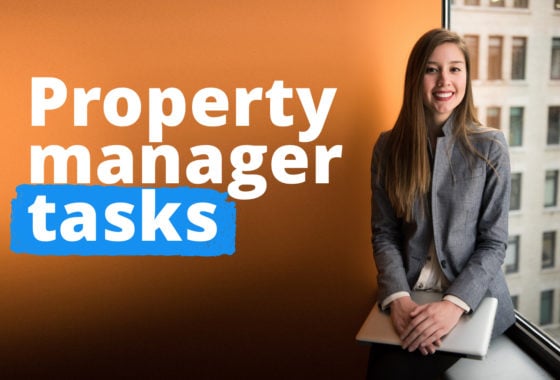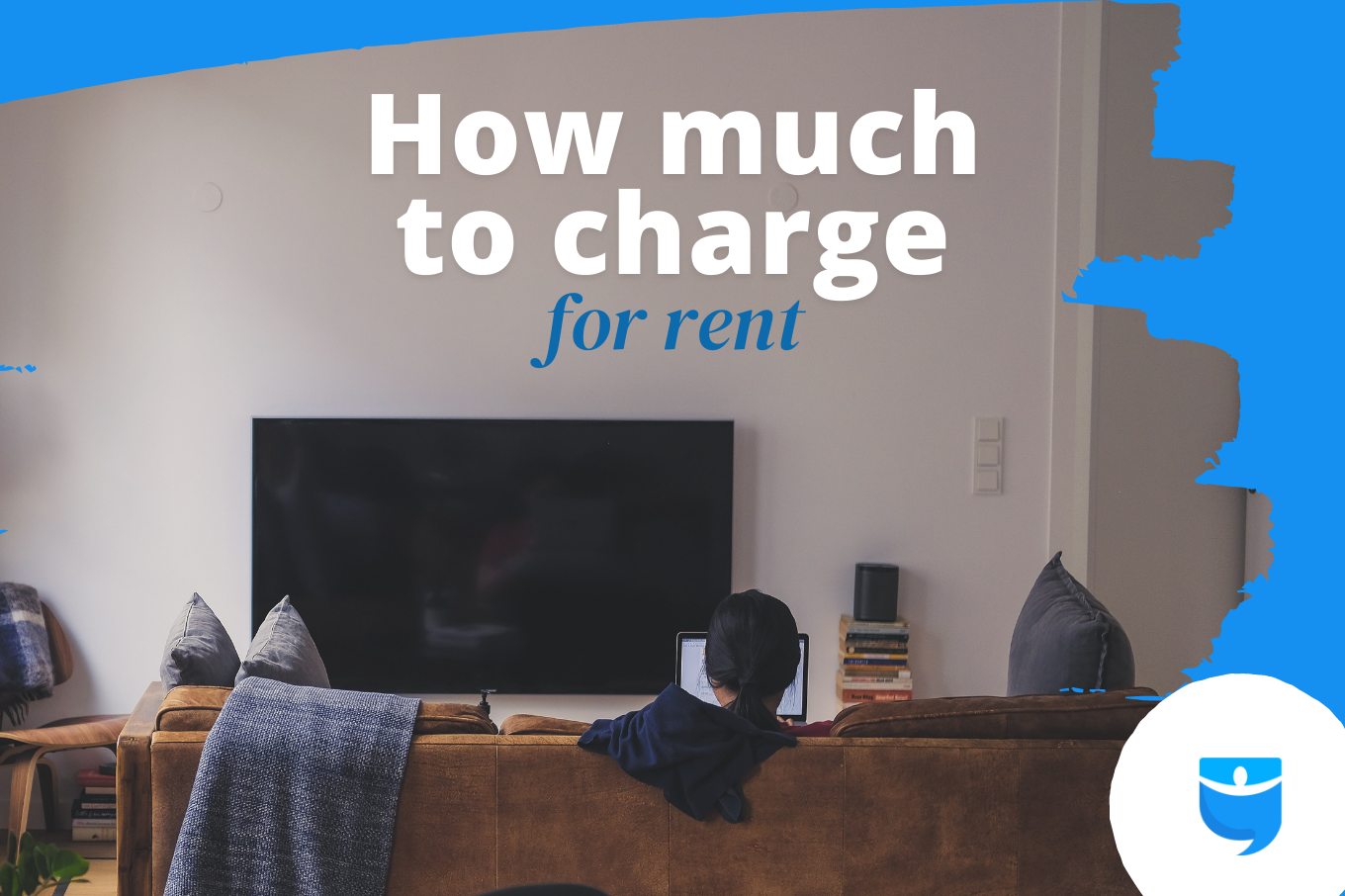Chances are you’ve heard horror stories from accidental landlords about costly evictions, destroyed rentals, and “tenants from hell.” You might know a dozen reasons why you shouldn’t rent out your property. Plus, you may not even understand how to rent your house… but still, you might simply need to turn your home into a rental property. Perhaps you…
- Tried selling—but the investment property market is weak
- Have been temporarily transferred out of the area for work
- Owe more than your house is worth, but can cover the mortgage with rental income
- Realized the incredible wealth-building opportunities that a rental property can provide for your financial future.
Yes, the bad stories receive the most press and attention. But here’s the facts: Every day, millions of landlords rent out houses to good tenants. With proper planning and preparation, you can minimize the hassles and turn your home into a profitable venture.

Purchasing your first rental property is just the beginning of your real estate journey, because being a good landlord is almost as important as making good deals. BiggerPockets’ free guide How to Become a Landlord: Managing Rental Properties for Real Estate Investors will teach you everything—from setting rent to handling evictions.
Should you rent your house out?
The first question to ask yourself is: Should you rent or sell your home? I’d like to make the case for why you should rent out your house. Here’s why.
- Your primary home, while a necessity in life, is not typically an asset or investment. An asset makes you money. A liability costs you money. By renting out your home, you transform a liability into an asset.
- You can hold onto your property while rental income pays down your mortgage. Over time, rental property values (hopefully) will climb and build your wealth. If you can rent out your house for more than your monthly expenses, you will also experience additional monthly cash flow. That’s the goal for all potential landlords—and what we at BiggerPockets want to help you achieve.
- Start your investment career with no additional costs. Renting your property could be the first step in a tried-and-true method for building wealth. Many real estate investors start this way—renting out their homes as they upgrade to bigger or better houses. This may also help fund your retirement, as you may end up owning multiple properties “free and clear” by the time you are ready to retire, providing monthly rental income or a lump sum if you sell.
- Retain the possibility of returning to that home. This is especially helpful if you’ve been forced to move quickly because of a temporary job relocation.
Learn more about landlording
The Landlord’s Guide to Rental Property Security Deposits
An important part of treating your rental property investments like a true business is getting serious about collecting security deposits. Learn how here!
What Does a Property Manager Do? Here’s the Job Description
Are you stuck working IN your business rather than ON it? Then maybe it’s time to explore what a good property manager could do for you.
How Much to Charge for Rent in 2021: A Landlord’s Guide
An optimized rental price is a critical factor in property management. How do you effectively manage your property or your property management team to achieve the best outcome? Here are…
How to Run a Tenant Background Check
Can you perform background checks on tenant applicants? Should you? Or is it a waste of time that is killing your occupancy rates and real estate returns?
12 Must-Ask Landlord Reference Check Questions
When you’re screening a tenant, getting references from previous landlords is perhaps the most important step in your due diligence. Be sure to run through these questions to get all…
Finding rental tenants
When it comes to attracting tenants to rent your house, marketing is key. You will want to reach as many potential tenants as possible so you have the largest pool to choose from. The following are three easy ways for marketing a property:
- Craigslist: This is one of the internet’s largest resources and easiest places to find tenants. Perhaps the best part? Craigslist is free—unless you are in a few select cities. (Pro tip: Don’t list the address here, though. Just give a general vicinity for safety purposes.) You can also place your ad in other online rental submission sites, like Trulia, Zillow, or PadMapper.
- Yard signs: One of the oldest but most successful ways to market your rental is with a simple “For Rent” sign in the yard. The biggest drawback to a sign, however, is instant notification of a vacant house to anyone driving by.
Pre-screening rental applicants
When you receive a call or message from a prospective rental tenant, always pre-screen before meeting in person. The easiest way to do this is by setting rental criteria and explaining that criteria over the phone. My criteria prior to a typical rental application process looks like this:
- Gross monthly income must equal approximately three times or more the monthly rent
- Favorable credit score
- Employment—with acceptable proof (i.e., pay stubs) of the required monthly income
- Good references from all previous landlords
- Agree to the total number of occupants allowed (e.g., two per bedroom per state law).
You can read this list over the phone to the prospective rental tenant and ask them if they meet these qualifications. If they don’t, don’t rent the home to them, waste your time screening them further, or even book a showing.
Should you use a property manager?
Should you manage the property yourself or hire a property manager to look after it? Generally, a property manager will charge roughly 10 percent of the monthly rent plus 50 percent of the first month’s rent when a new tenant moves in.
In exchange for this fee, a property manager will typically:
- Advertise for finding new tenants
- Process rental applications
- Sign the rental lease
- Collect the monthly rent
- Keep track of the financials
- Schedule maintenance repairs
- Issue legal notices
- Enforce rental policies
- Understand and navigate landlord-tenant laws
- File evictions.
How much should you charge for rent?
You can’t arbitrarily decide what rent you want to charge—the market makes that decision. Your job is to determine the fair market rent for your house by doing research. Generally, your house will rent for about the same amount as other rental properties with a similar location, size, and condition. Start by searching for similar properties on Craigslist and Zillow.
For the most detailed information about a property’s fair market rent, input the address into BP Insight’s Rent Estimator. We’ll provide data for that property and properties like it. This tool looks for the most similar properties in your area and estimates the rent for your property based on those comps.
Also consider:
- Driving around and looking for “For Rent” signs
- Calling property management companies
- Asking other local landlords
- Browsing local newspapers.
What about the security deposit?
A security deposit is a sum of money paid by a tenant to ensure they fulfill the terms of their lease. Remember, though—this is a deposit, not a fee. This money should be held in a separate bank account and returned to the rental tenant when they move out, less any damages that need to be repaired.
Many states restrict the amount you can charge, so make sure to check to find any local limitations. I typically charge the equivalent of the monthly rent for a security deposit, though I may charge more than that if the rental tenant has anything in their background that worries me (more on this in a while).
Rental application process
Always give an application to each prospective renter who is interested in your rental home, even if you are not interested. After all, you don’t want to be seen as discriminatory. The actual rental application should include a variety of information—at a minimum:
- Names of all potential renters
- Date of birth
- Social security number
- Phone number
- Alternate phone number
- Previous addresses (last five years)
- Current employer (name, hire date, income, contact info)
- Past employers (name, hire date, income, contact info)
- Emergency contact information
- Release of information statement
- Signature for all rental tenants.
Always—I repeat, always—require an application fee. This should cover the cost of the background check. However, before bothering with the components of screening that cost you money, first scan the rental application to ensure candidates meet your initial criteria.

If you’re considering using rental properties to build wealth or obtain financial freedom, this book is a must-read. With nearly 400 pages of in-depth advice for building wealth through rental properties, The Book on Rental Property Investing imparts the practical and exciting strategies that investors use to build cash flow and wealth.
Conducting background and credit checks
There are various tenant screening sources you can use to run a background or credit check on a rental tenant. Many property management apps offer built-in screening tools, too.
Before digging into the screening data, you need to decide what kind of background or credit score you’ll allow. That’s largely dependent on your location and the strength of your real estate market. The things to look closely are:
- Felonies
- Prior evictions filed
- Prior evictions carried out
- Bankruptcy
- Judgments
- Other criminal or bad financial history.
Verifying income and checking credit history
Your rental application should include a “release of information” signature, which allows you to check up on their claims. Start with their job. The rental application should include the name and phone number of their current employer, so call and speak with the manager, owner, or human resources manager. (Many times, you will be required to fax over the release-of-information signature.)
Then, the important questions to ask are:
- How much do the renters currently earn?
- How long have the renters worked there?
- Is this job considered temporary?
Next, call their previous landlords for at least the past five years. Be sure to do the renters’ pre-screening (i.e., background check and credit check) to see if any other addresses appear that might indicate they conveniently “forgot” to include a landlord that they rented from.
When talking with previous landlords, consider asking the following questions:
- How long did the rental tenant rent from you?
- What was their monthly rent?
- Did the rental tenant give proper notice when vacating?
- Was the rental tenant refunded their security deposit?
- Would you rent to this rental tenant again?
Accepting or denying a rental applicant
To avoid discrimination complaints, always process rental applications on a first-come, first-served basis. Process each rental application until you discover the applicant does not qualify.
When you deny a rental applicant, it is important that you clearly document your reasons for why you are denying the renter to avoid discrimination complaints. Always inform the rental tenant with written notice.
When you find a rental applicant who meets all your requirements, you can verbally let your future tenant know that they are approved.
Rental lease agreements
You can get a state-specific lease agreement from BiggerPockets’ lawyer-reviewed lease library, which includes forms for all 50 states.
Most landlords choose a one-year lease in an effort to keep their tenants in the rental home as long as possible, minimizing turnover. While rental agreements generally vary in length and content, most leases contain the following information:
- Names of rental tenants
- Address of the rental property
- Lease agreement term length
- Monthly rent amount
- Security deposit amount
- Late fee definition, penalties, and fees
- Landlord-tenant laws
- A move-in condition report
- Rental policies
- Provisions for or against pets, utilities, smoking, and more
Signing the lease agreement
Go through the lease agreement ahead of time and mark all the areas that require a signature or initials with Post-It Notes or a highlighter. That way, nothing will be forgotten or missed. When you meet with the rental tenant, walk them through each provision in the lease, step-by-step, and ask them to sign as you go. This may be time-consuming, but it will help protect you months down the road when the tenant says, “I didn’t know that.”
Inspecting the property before move-in
By this time, the monthly rent and security deposit have been paid and the lease agreement has been signed. It’s now important to do one final thing before handing over the keys to the renter: the move-in condition report. This is simply a paper that the tenant signs that documents, in detail, the condition of the rental property upon taking possession.
Allow the renter to take some time walking through the rental property and inspecting it. Encourage them to take notes of the condition of each room. Also consider taking photos or a video of the property before handing over the keys. This will be further evidence in the future when the rental tenant moves out.
In addition, consider requiring that renters carry renters insurance. Renters insurance is akin to homeowners insurance, but it will protect the renter’s stuff should the unfortunate happen, such as fire and theft.
The paperwork may be done, but your journey is just beginning. As a landlord, it is your responsibility to ensure monthly rent is paid on time, late fees are charged when needed, repairs are performed when required, and bookkeeping is kept up to date.
Note By BiggerPockets: These are opinions written by the author and do not necessarily represent the opinions of BiggerPockets.





